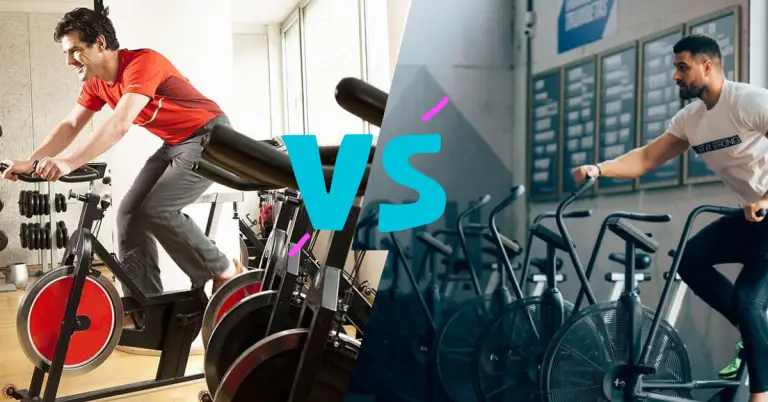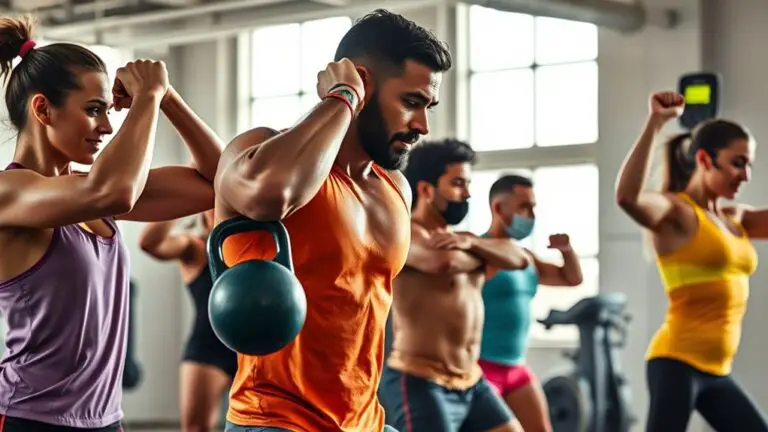How to Train Like a Professional Athlete in the Gym
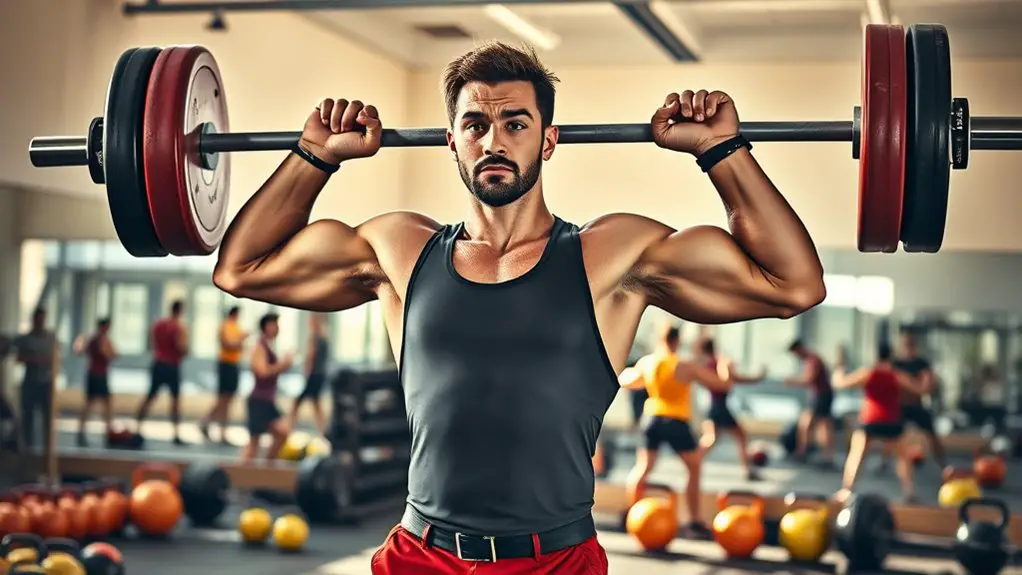
To train like a professional athlete in the gym, you need to adopt a focused mindset and set specific, measurable goals. Incorporate a balanced training regimen that includes strength, endurance, and skill work. Don’t forget nutrition; fuel your body with the right balance of proteins and carbs. Recovery is essential too. Cross-training helps prevent injuries and build overall fitness. Stay committed and track your progress. There’s much more to mastering your athletic potential just ahead.
Understanding the Athlete’s Mindset

To truly excel in sports, you need to dive deep into the athlete’s mindset, where determination and focus play essential roles. Developing mental resilience is important; it helps you bounce back from setbacks and stay committed to your training. Incorporating visualization techniques can elevate your performance. Picture yourself achieving your goals, feeling the emotions tied to those successes. This practice can enhance your focus and prepare you for real-life challenges.
Adopting a goal-oriented mindset is another key aspect. By setting clear intentions, you’ll create a roadmap for your journey. Performance psychology emphasizes that your thoughts influence your actions, so cultivate a positive inner dialogue. Remind yourself of your strengths and visualize overcoming obstacles. Recognizing the importance of setting realistic goals can significantly boost your motivation and commitment.
Ultimately, mastering the athlete’s mindset involves a blend of resilience, visualization, and goal-setting. Embrace these tools, and you’ll be well on your way to training like a professional athlete.
Setting Specific and Measurable Goals
While it’s easy to dream about athletic success, setting specific and measurable goals turns those dreams into actionable plans. Start by identifying what you want to achieve—whether it’s increasing your strength, improving endurance, or mastering a specific skill. Break these larger goals into smaller, manageable milestones that you can track.
For example, instead of saying, “I want to get stronger,” specify, “I’ll add 10 pounds to my deadlift in the next month.” This kind of goal setting not only provides clarity but also creates measurable outcomes, allowing you to see your progress.
Regularly reviewing your goals helps keep you motivated and on track. Don’t forget to celebrate your achievements, no matter how small—they’re stepping stones toward your ultimate success. With focused goals, you’re not just dreaming; you’re actively shaping your athletic journey!
Incorporating a Balanced Training Regimen
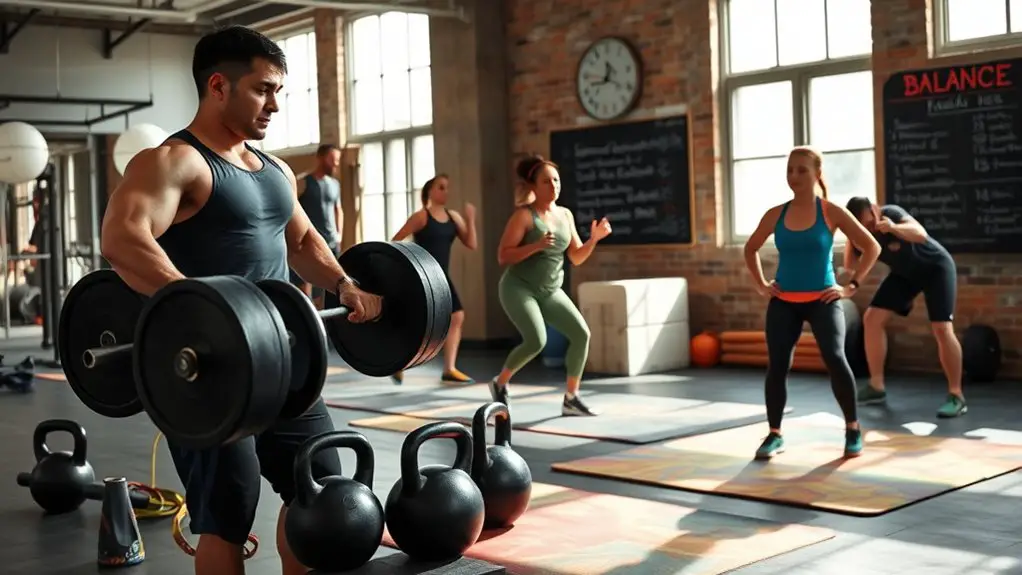
Incorporating a balanced training regimen is essential for reaching your athletic goals, as it guarantees that you develop strength, endurance, flexibility, and skill simultaneously. To achieve this, you need to embrace balanced workouts that include various training methods. Here are some tips to help you create training variety:
- Mix different exercise modalities: Combine strength training, cardio, and flexibility exercises to ensure overall fitness.
- Vary your intensity and duration: Incorporate high-intensity interval training (HIIT) alongside longer, steady-state workouts to challenge your body in different ways.
- Schedule recovery and rest days: Allow your body to recuperate and adapt, preventing burnout and injuries. Regular exercise has been shown to reduce the risk of chronic diseases such as heart disease and diabetes, making it even more important to establish a well-rounded routine.
Focusing on Strength and Conditioning
To train like a professional athlete, you need to focus on essential strength exercises and effective conditioning techniques. These elements are vital for building power, endurance, and overall performance. Let’s explore how you can incorporate them into your routine to maximize your athletic potential. Additionally, incorporating skipping rope into your training can enhance cardiovascular fitness and improve your coordination.
Key Strength Exercises
Strength training is an essential component of any athlete’s regimen, and focusing on key exercises can enhance your performance considerably. Incorporating these movements will help you build functional strength, core stability, and explosive power, crucial for athletic success.
- Compound movements like squats and deadlifts boost overall strength and target multiple muscle groups simultaneously.
- Olympic lifts develop power and speed, necessary for explosive athletic performance.
- Plyometric drills improve your agility and coordination, while also enhancing muscle elasticity.
Don’t forget to include resistance training and bodyweight exercises in your routine. Add mobility work for flexibility and injury prevention; this will keep you performing at your best. Start integrating these key strength exercises today, and watch your athletic performance soar!
Conditioning Techniques Overview
Conditioning techniques are essential for enhancing your athletic performance and ensuring you can sustain high levels of intensity during your training and competitions. Incorporating effective conditioning drills into your routine is key to building stamina and resilience. Focus on endurance training to improve your cardiovascular fitness, enabling you to recover faster and maintain peak performance throughout your workouts. High-intensity interval training (HIIT) is a great way to combine strength and conditioning, boosting both aerobic and anaerobic capacities. Don’t forget to include sport-specific drills that mimic game scenarios, as this will enhance your agility and reaction time. By consistently applying these conditioning techniques, you’ll not only elevate your performance but also reduce the risk of injury, setting yourself up for long-term success.
Mastering Skill Development for Your Sport
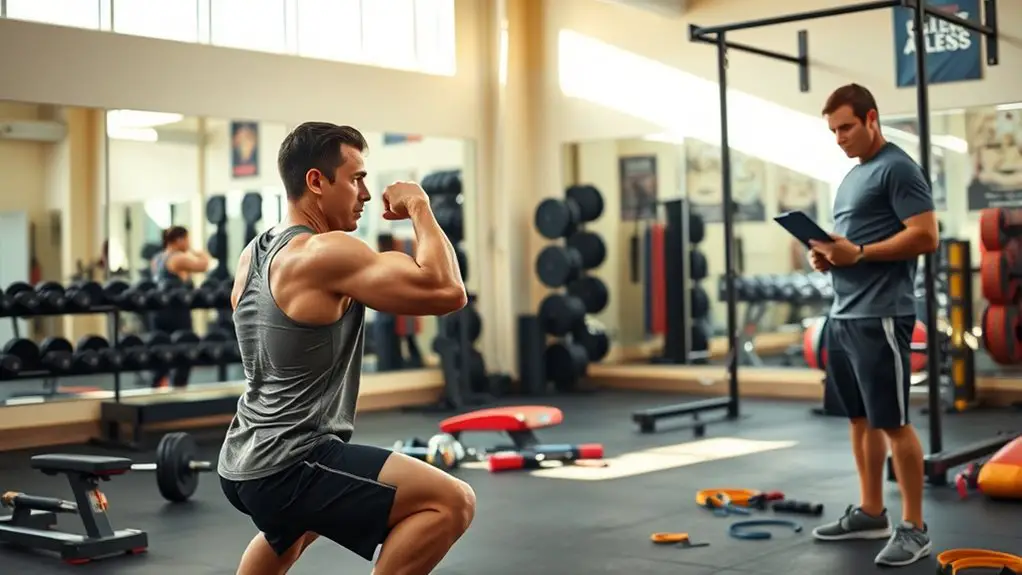
To truly excel in your sport, mastering the right technique is essential. Consistent practice routines will help you refine your skills and build muscle memory. By focusing on these elements, you’ll set yourself up for success and elevate your performance to the next level.
Focus on Technique
Mastering technique is essential if you want to elevate your performance to the level of a professional athlete. Focusing on technique refinement not only enhances your skills but also guarantees that your movement patterns are efficient and effective. Here are some key aspects to evaluate:
- Break down complex movements: Isolate each component of your technique to understand and improve it better.
- Utilize video analysis: Record yourself during practice to identify areas for improvement and refine your skills.
- Seek feedback from coaches: Their expertise can help you adjust your technique and develop proper movement patterns.
Consistent Practice Routines
While you may have the drive and determination to excel, establishing consistent practice routines is essential for developing your skills like a professional athlete. Focus on both training frequency and practice variety to maximize your progress. Here’s a simple table to guide you:
| Training Frequency | Practice Variety |
|---|---|
| 3 times a week | Drills & Techniques |
| 4 times a week | Game Simulations |
| 5 times a week | Strength Training |
| 6 times a week | Recovery Sessions |
| Daily | Cross-Training |
Prioritizing Recovery and Rest
Although many athletes focus on intense training routines, prioritizing recovery and rest is just as vital for achieving peak performance. Incorporating effective recovery strategies not only boosts your training but also helps prevent injuries. Here are some key methods to enhance your recovery:
- Active recovery: Engage in low-intensity activities like walking or light cycling to promote blood flow and aid muscle recovery.
- Sleep optimization: Aim for 7-9 hours of quality sleep each night to support muscle repair and mental clarity.
- Relaxation techniques: Practices like yoga or meditation can improve stress management and enhance overall well-being. Additionally, consider showering before workouts, which can increase feelings of freshness and prepare your body and mind for physical activity.
Don’t underestimate the power of foam rolling and massage therapy, which can alleviate muscle tightness and improve flexibility. Pair these methods with recovery nutrition to refuel your body effectively. Remember, prioritizing recovery is essential—without it, your hard work in the gym can be undermined!
Nutrition: Fueling Your Performance

To reach your peak performance, nutrition is just as essential as your training routine. You need the right balance of macronutrients, effective hydration strategies, and proper timing of nutrient intake to fuel your body. Let’s explore how to optimize your diet for maximum energy and results.
Macronutrients for Optimal Energy
When you’re training like a professional athlete, understanding macronutrients is essential for fueling your performance and maximizing your energy levels. Balancing your intake of protein, carbohydrates, and fats can make a significant difference in your training outcomes.
- Prioritize protein sources like lean meats, eggs, and legumes to support muscle recovery and growth.
- Focus on carbohydrate timing by consuming complex carbs before workouts for sustained energy and simple carbs post-workout to replenish glycogen stores.
- Don’t forget healthy fats from sources like avocados and nuts, which provide long-lasting energy.
Hydration Strategies for Athletes
After fueling your body with the right macronutrients, the next step in optimizing your performance is staying properly hydrated. Effective hydration techniques are essential for maintaining your electrolyte balance, which can directly impact your strength, endurance, and recovery. Start by drinking water consistently throughout the day, not just during workouts. During intense training sessions, consider electrolyte-rich drinks to replenish lost minerals. Pay attention to your body’s signals; thirst is a sign you may already be dehydrated. Aim for clear or light-colored urine as a hydration indicator. Remember, every athlete’s needs are different, so find what works best for you. By prioritizing hydration, you’ll enhance your performance and set yourself up for success in the gym.
Timing Your Nutrient Intake
While it might seem tempting to focus solely on what you eat, the timing of your nutrient intake can be just as essential for maximizing your athletic performance. Proper meal timing enhances nutrient absorption, ensuring your body gets the fuel it needs when it matters most. Here are some key strategies to ponder:
- Pre-Workout Nutrition: Fuel up with carbs and protein 30-60 minutes before training to boost energy and muscle performance.
- Post-Workout Recovery: Consume a mix of protein and carbs within 30 minutes after your workout to aid muscle recovery and replenish glycogen stores.
- Regular Meal Intervals: Eating smaller meals every 3-4 hours can help maintain energy levels and optimize nutrient absorption throughout the day.
Utilizing Cross-Training Techniques
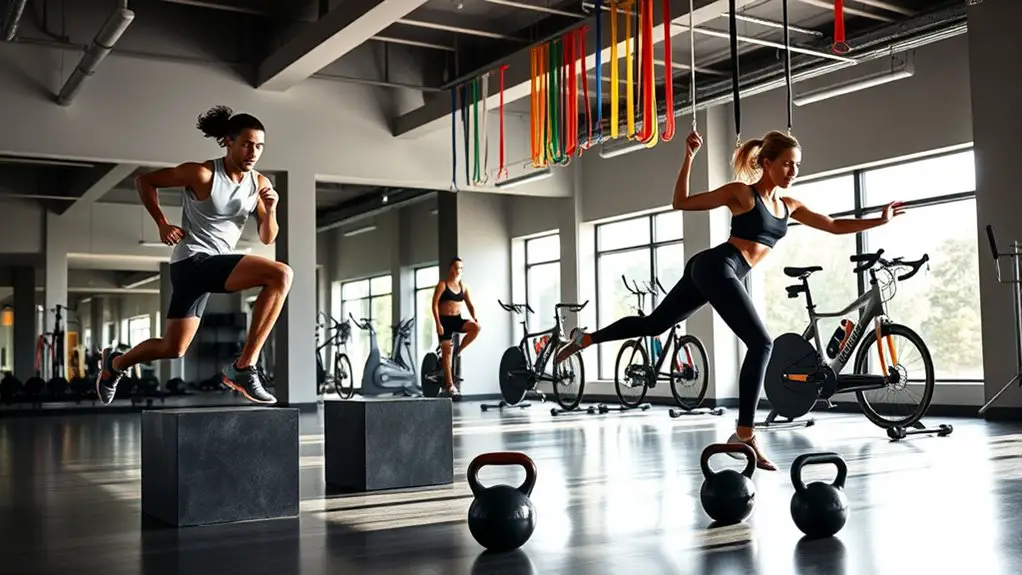
Cross-training techniques can be a game changer for your athletic performance, as they not only enhance your overall fitness but also reduce the risk of injury. By incorporating varied workouts into your routine, you allow different muscle groups to engage, preventing overuse injuries and promoting balanced strength.
For example, if you’re a runner, adding swimming or cycling can improve your cardiovascular endurance while giving your joints a break. Cross training benefits you by keeping workouts fresh and exciting, which helps maintain motivation and commitment.
Consider mixing in strength training, yoga, or Pilates to improve flexibility and core stability. By diversifying your training, you’ll develop well-rounded fitness and boost your performance in your primary sport. Incorporating activities like skipping rope can provide both aerobic and anaerobic benefits, enhancing your cardiovascular fitness. Embrace the challenge of varied workouts, and you’ll not only become a more resilient athlete, but you’ll also enjoy the journey of fitness more. So, get creative and start cross-training today!
Tracking Progress and Making Adjustments
To maximize the benefits of your diverse training routine, it’s important to track your progress and make adjustments along the way. Without effective progress measurement, you might miss opportunities for improvement. Here are some adjustment strategies you can implement:
- Keep a Training Log: Record your workouts, noting weights, reps, and how you feel. This helps you identify patterns and areas needing change.
- Set Specific Goals: Establish clear, achievable objectives. Regularly assess whether you’re meeting these goals and tweak them if necessary.
- Listen to Your Body: Pay attention to signs of fatigue or discomfort. Adjust your training intensity or rest periods to guarantee ideal recovery. Additionally, tracking your body composition changes can provide insight into the effectiveness of your training regimen.
Staying Motivated and Committed to Your Training

How do you keep that fire burning when the excitement of training starts to fade? Staying motivated requires mental resilience and effective strategies. Consider using accountability partners to keep you on track. Set milestones and celebrate your progress, no matter how small.
Here’s a quick table to help you implement motivational techniques:
| Technique | Description | Benefits |
|---|---|---|
| Positive Affirmations | Daily self-encouragement | Boosts confidence |
| Visualization Strategies | Imagining success in training | Enhances focus and motivation |
| Maintaining Consistency | Sticking to a routine | Builds habits and resilience |
| Overcoming Obstacles | Identifying and addressing challenges | Strengthens determination |
Incorporating these techniques into your routine fosters intrinsic motivation. Remember, it’s about the journey, so embrace each step along the way!
Frequently Asked Questions
How Many Hours Should I Train Each Week?
When considering how many hours you should train each week, it’s essential to balance intensity and recovery. Aiming for 10 to 15 hours is often effective for most people, depending on your goals. You might want to structure your weekly schedule by incorporating both strength and cardio sessions. Remember, consistency is key, so finding a training frequency that fits into your lifestyle will help you stay motivated and reach your goals faster.
What Equipment Do I Need for Professional-Level Training?
What would it feel like to train like a champion? To achieve that, you’ll need some essential equipment. For strength training, invest in free weights, resistance bands, and a sturdy bench. Don’t forget a jump rope and agility ladder for those conditioning drills that elevate your game. With the right gear, you can push your limits and release your potential. So, gear up and get ready to dominate your training!
How Do I Find a Training Partner?
Finding a training partner can make all the difference in your fitness journey. Start by reaching out to friends or family who share your goals and can provide motivation. Joining local fitness classes or online communities can also help you connect with like-minded individuals. Once you find someone, communicate your goals and hold each other accountable. You’ll not only push each other to improve but also make the process more enjoyable!
Should I Hire a Personal Trainer?
Hiring a personal trainer can be a game-changer for your fitness journey. You’ll benefit from their expertise, ensuring you’re using proper techniques and maximizing your workouts. While there’s a trainer cost involved, think of it as an investment in your health and goals. A good trainer can provide motivation, personalized plans, and accountability, helping you stay on track. If you’re serious about achieving results, a personal trainer could be the perfect solution!
How Can I Avoid Injuries While Training?
Think of your body as a finely-tuned race car; without proper care, it can break down. To avoid injuries, prioritize injury prevention techniques, like incorporating dynamic warm-up routines before each workout. These routines prepare your muscles and joints, reducing strain during intense exercises. Always listen to your body—if something doesn’t feel right, don’t push through the pain. With the right approach, you’ll keep your performance high and your body healthy.
